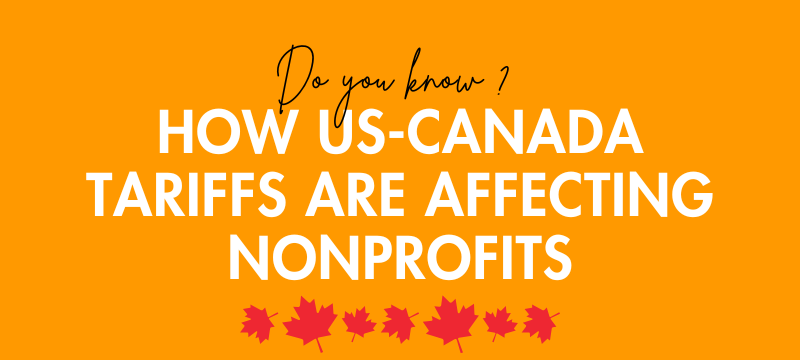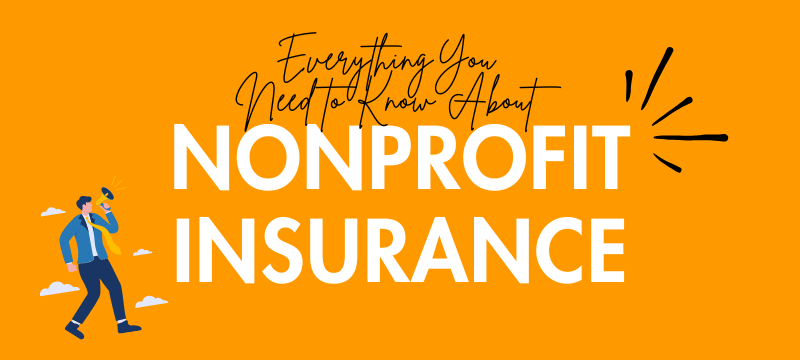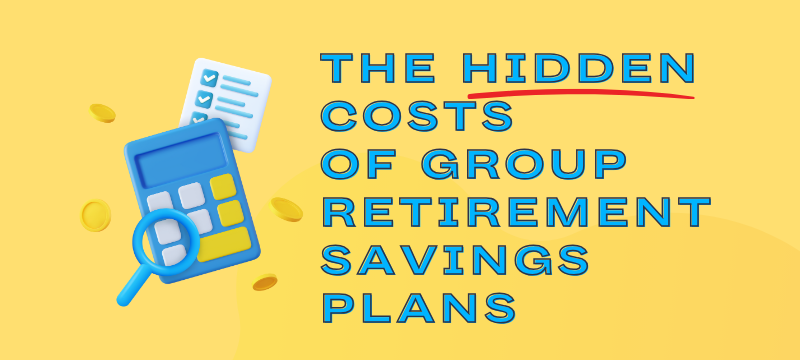Running a nonprofit is all about doing good in the community, but let’s face it—no…

Impact of Tariffs on Nonprofits: How US-Canada Trade Policies Are Changing the Sector
Who benefits from tariffs? Who really pays the price? Today, we’re diving into US-Canada tariffs 2025—specifically, the new 25% tariffs the U.S. government is imposing on most Canadian goods and Canada’s 25% retaliatory tariffs on U.S. goods. What does this mean for real estate, home prices, and nonprofit organizations? The impact of tariffs on nonprofits is profound, leading to higher costs and operational challenges.
What Are Tariffs?
So first, what is a tariff?
A tariff is basically a tax on imported goods. If a country imposes a 25% tariff on a product, that means it becomes 25% more expensive when it crosses the border.
Let’s take an example: A $100 bag of groceries from the U.S. With a 25% tariff, that same bag now costs $125.
Now imagine this happening not just with groceries but also with building materials, appliances, and furniture—things that directly affect everyday Canadians and nonprofits!
Do Tariffs Work?
But let’s take it a step further. Do tariffs actually help domestic industries, or do they just make everything more expensive?
A real-world example from the Wall Street Journal examined washing machines:
A few years ago, during Donald Trump’s first term, the U.S. imposed tariffs on imported washing machines to protect American manufacturers. The idea? Make foreign washing machines more expensive so people buy American-made ones instead.
What actually happened?
- It did create jobs—1,800 jobs from foreign companies opening plants in the U.S.
- The U.S. collected $82M annually in tariff revenue.
Before we celebrate tariffs as a success, there’s a catch:
- ALL washing machine prices went up—both imported and American-made.
- The price increase extended to dryers as well.
- Consumers paid an extra $1.5 billion in higher prices.
- The U.S. effectively spent $815K per job created—a costly tradeoff.
The Big Picture – How Much Are Americans Paying in Tariffs?
The U.S. imports billions of dollars worth of goods from Canada, Mexico, and China every year.
Under Trump’s trade policy in 2025:
- 25% tariffs on Canadian and Mexican goods.
- 10% tariffs on Chinese goods.
How Much Does This Actually Cost?
Here are the actual numbers:
- In 2024, the U.S. imported:
A 25% tariff on Canadian and Mexican goods, plus a 10% tariff on Chinese goods, means Americans are paying tens of billions more in extra taxes!
In my simple mind:
- $429B from Canada × 25% = $107 billion in extra tariffs paid by American consumers.
- $536B from China × 10% = $54 billion in additional taxes.
The cost of living in America will rise dramatically. Yes, some jobs may be created, but many more will be lost in industries reliant on imported goods.
But What About Canada?
Canada also relies heavily on U.S. imports. In 2024, Canada imported $435 billion worth of goods from the U.S.
In response to America’s 25% tariffs, the Canadian government announced retaliatory tariffs on various U.S. goods.
- A 25% tariff on many U.S. products means Canadians will pay billions more.
- Estimated impact? Up to $109 billion annually added to costs for Canadian consumers.
- Canadians are adapting—“Made in Canada” products are becoming more visible in grocery stores.
Impacts on Nonprofits
Tariffs don’t just affect businesses—they hit nonprofits, charities, and social services hard. The impact of tariffs on nonprofits is significant, affecting funding, operations, and supply chains.
Higher Operating Costs for Nonprofits
- Many nonprofits rely on imported medical supplies, food, and equipment.
- A 25% tariff means higher costs, making it harder to stretch budgets.
- Result? Less funding available for programs and services.
Food Banks & Shelters Face Price Increases
- Expect higher prices for food and essential supplies.
- Bulk groceries, medical items, and hygiene products will cost more.
- Fewer donations may stretch resources even thinner.
Government & Donor Funding Won’t Keep Up
- Nonprofits already struggle with limited budgets.
- Increased costs from tariffs aren’t matched by higher government grants.
- Some nonprofits may need to cut services or staff to survive.
Supply Chain Delays Impact Aid Programs
- Tariffs disrupt supply chains, causing delays in nonprofit procurement.
- Organizations may struggle to receive materials for disaster relief, housing programs, and community services.
Regional Nonprofits Will Struggle More
- Smaller organizations with limited reserves will face tougher financial decisions.
So What’s on the Tariff List?
What kinds of nonprofit-related products are getting hit with tariffs? Let’s break it down:
🔹 Nonprofit Operations & Supplies
- Medical devices & equipment (used by healthcare nonprofits)
- Bulk food products (critical for food banks & meal programs)
- Office supplies & electronics (affecting nonprofit administration & outreach)
🔹 Essential Community Goods
- Dairy products & groceries (impacting food security programs)
- Hygiene products & medical kits (affecting shelters and aid organizations)
- Vehicles & transportation costs (increasing expenses for delivery programs)
What does this mean? Less funding for services AND more strain on community organizations.
Conclusion
So, what’s the takeaway? Tariffs mean higher costs, tighter budgets, and potential service cuts for nonprofits. The impact of tariffs on nonprofits is undeniable, creating financial strain and operational challenges. If you work with a nonprofit, this is something you need to plan for.
💬 What do you think? What can we have done better to prevent this? Drop your thoughts in the comments!



